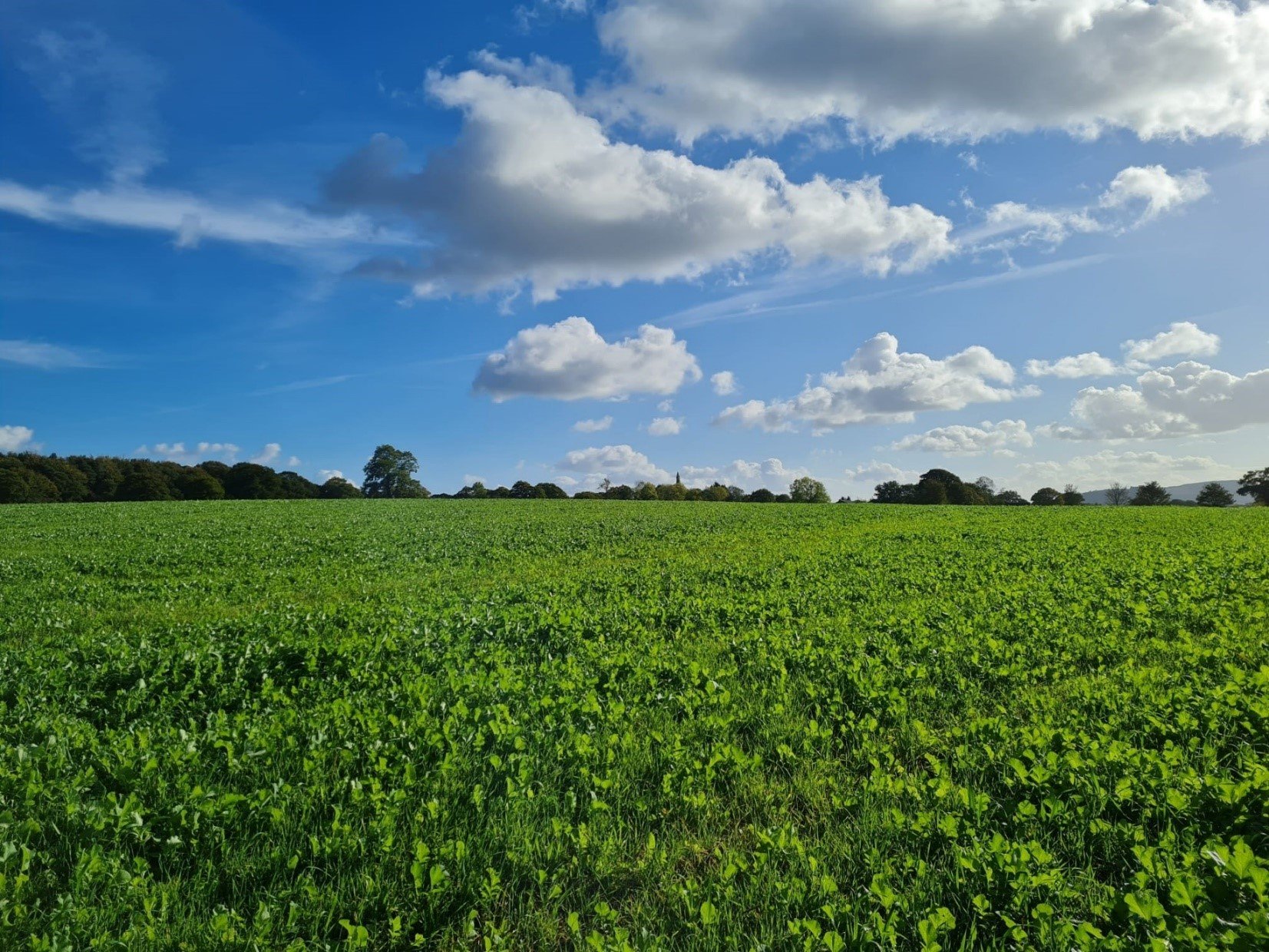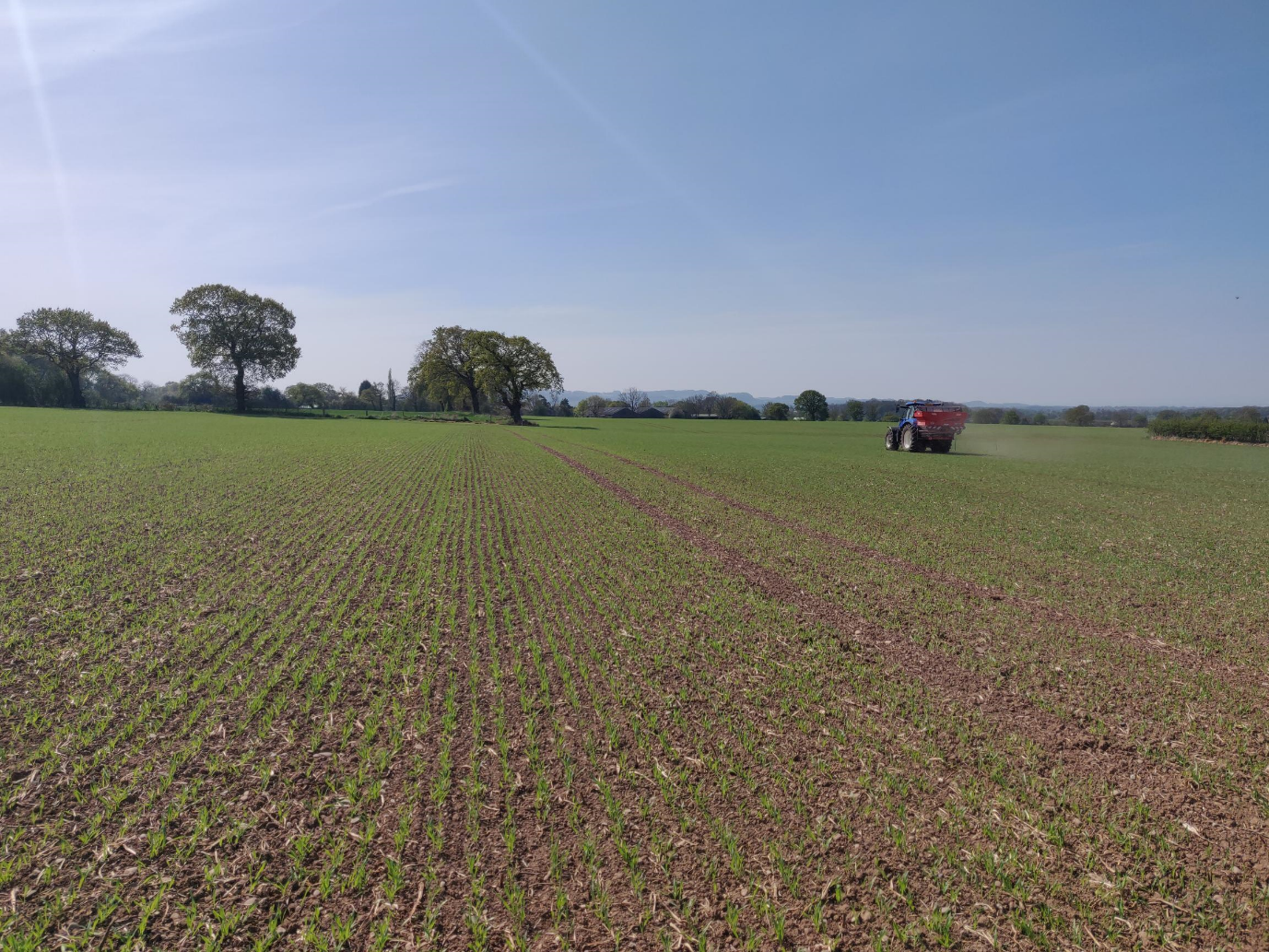Cheshire cover crop trial reduces fertiliser use to achieve yield and protect raw water quality
A trial at a Cheshire farm led by United Utilities and Compass Agronomy has shown how growing cover crops and carrying out soil analysis can reduce artificial fertiliser use to protect raw water sources.
The project with Lower House Farm in Cheshire took place over two years to establish how much captured nitrogen in a cover crop’s biomass could be released for the following spring’s crop. Having this information means that a more tailored approach to fertiliser use can be used, ultimately protecting raw groundwater sources by reducing nitrate leaching risks.
 The trial utilised the Soil Mineral Nitrogen (SMN) Plus system by Compass Agronomy, which estimates how much nitrogen is available in the soil and the amount likely to be mineralised from soil organic matter and incorporated crop residues. This data can then be used to calculate how much additional nutrients are required from fertiliser, so farmers do not have the expense of over-using products which would only go unused by the crops and leach out of the soil.
The trial utilised the Soil Mineral Nitrogen (SMN) Plus system by Compass Agronomy, which estimates how much nitrogen is available in the soil and the amount likely to be mineralised from soil organic matter and incorporated crop residues. This data can then be used to calculate how much additional nutrients are required from fertiliser, so farmers do not have the expense of over-using products which would only go unused by the crops and leach out of the soil.
Tanis Slattery-Penfold, Catchment Advisor at United Utilities, explained: “Nitrogen leaching from soil into raw groundwater sources can have a significant adverse effect on raw water quality, that’s why we’re working with farmers and land managers across the North West to find practical and cost-effective ways to help them reduce the loss of nutrients while supporting their crops.
“We embarked on this trial with Compass Agronomy and Lower House Farm to showcase how cover crops can help protect our precious raw water resources, and also benefit farmers by improving nutrient management.”
In year one a mixed species cover crop was established on sandy loam soil, with three different sections receiving the farm’s usual practice of nitrogen fertiliser, the SMN Plus recommended treatment, or no fertiliser. Monthly soil and crop nitrogen measurements were taken during the spring and summer.
 As soil nitrogen decreased, crop nitrogen content increased for both farm practice and SMN Plus treatments. At harvest, both treatments yielded 6.7 t/ha, but the farm practice treatment recovered 208 kg N/ha compared to the SMN Plus which recovered less (166 kg N/ha) due to the slower breakdown of nitrogen from the residues.
As soil nitrogen decreased, crop nitrogen content increased for both farm practice and SMN Plus treatments. At harvest, both treatments yielded 6.7 t/ha, but the farm practice treatment recovered 208 kg N/ha compared to the SMN Plus which recovered less (166 kg N/ha) due to the slower breakdown of nitrogen from the residues.
The second year of the trail established a different mixed cover crop, with the same processes for sampling and fertiliser application. In this season, hot and dry weather conditions were a factor, likely impacting some residues not being fully incorporated into the soil.
The farm practice treatment out-yielded the SMN Plus by 1 t/ha. This increase was due to the additional supply of nitrogen (53 kg N/ha), maintaining a higher tiller and ear number. SMN Plus did produce the target yield the optimum nitrogen rate predicted.
SMN Plus recovered nearly all of the applied nitrogen (93%) compared to farm practice which recovered half (50%). This resulted in a lower surplus of 56 kg N/ha for SMN Plus, compared to the farm practice treatment of 141 kg N/ha. The farm practice treatment resulted in 2.5 times more nitrogen being left in the system and at risk of overwinter leaching compared to SMN Plus.
Alli Grundy of Compass Agronomy said: “The trial demonstrated that reducing fertiliser inputs to account for cover crop residue resulted in improved nitrogen use efficiency overall, which can lower the risk of over-application, reduce fertiliser costs and help to protect the environment from nitrogen leaching.
“Including cover crops in arable rotations and utilising SMN Plus can improve nitrogen recovery and uptake, achieve required crop yields with reduced fertiliser inputs, and result in a lower nitrogen surplus after harvest, which all contribute to improving nutrient use efficiency. These practices can help farmers and growers protect the environment and raw water quality, by reducing nitrate losses to groundwater.”
Rob Briscoe of Lower House Farm added: “The grey area has always been how much nitrogen has been locked up by the cover crop and how much is available to the preceding crop as the cover crop breaks down over the growing season.
“After several years of growing cover crops we have seen a marked improvement in the condition of our soil, with the added bonus of fields staying drier over winter than when left as bare stubble and of course less leaching of essential nutrients.
“These trials run by United Utilities are a great benefit going forward, showing us how much and how soon nutrients are released by the decomposing cover crop. It also helps us tailor our fertiliser plan for the following crop and probably the one after as well, as not all nitrogen seems to be released for the first crop, which clearly is a huge financial benefit for the farm.”
Tanis Slattery-Penfold continued: “The results demonstrate that including cover crops in arable rotations and utilising SMN Plus can improve nitrogen recovery and uptake, achieve required crop yields with reduced fertiliser inputs, and result in a lower nitrogen surplus after harvest, which all contribute to improving nutrient use efficiency and thereby reducing the risk of nitrate leaching.
“These practices can help farmers and growers protect the environment and raw water quality by reducing nitrate losses to groundwater, while also improving nutrient use on the farm.”
This trial, and ongoing partnership working with farmers and land managers across the North West, is part of United Utilities’ holistic approach to improving river catchment land. This considers how all those who care for or work the land can help to protect and enhance the water environment by managing pollution and reducing flood risk.
To learn more about the United Utilities catchment management approach, visit: https://www.unitedutilities.com/corporate/responsibility/stakeholders/catchment-systems-thinking/ or email: southcatchmentteam@uuplc.co.uk